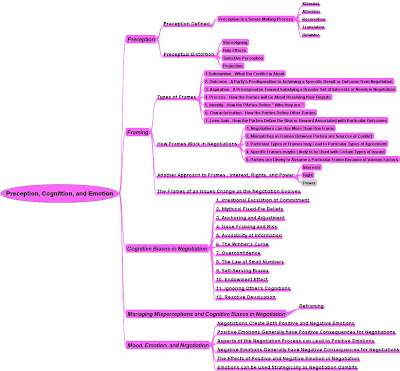
Summary
In this chapter, the first portion of the chapter presented a brief overview of the perceptual and discussed four types of perceptual distortion, stereotyping, halo effects, selective perception, and projection.
The chapter then discussed one of the most important recent areas of inquiry in negotiation, that of cognitive biases in negotiation. This was followed by consideration of way to manage misperception and cognitive biases in negotiation.
The first step to manage misperceptions and cognitive biases in negotiation is to be aware. When negotiators apply mismatch frames, it may become to reframe the negotiation. The role of mood and emotion can effect to the negotiation while the consequences for negotiation is leaded by the emotion. The distinction between mood and emotion is based on three characteristics: specificity, intensity, and duration. Emotions play important roles at various stages of negotiation interaction.

No comments:
Post a Comment